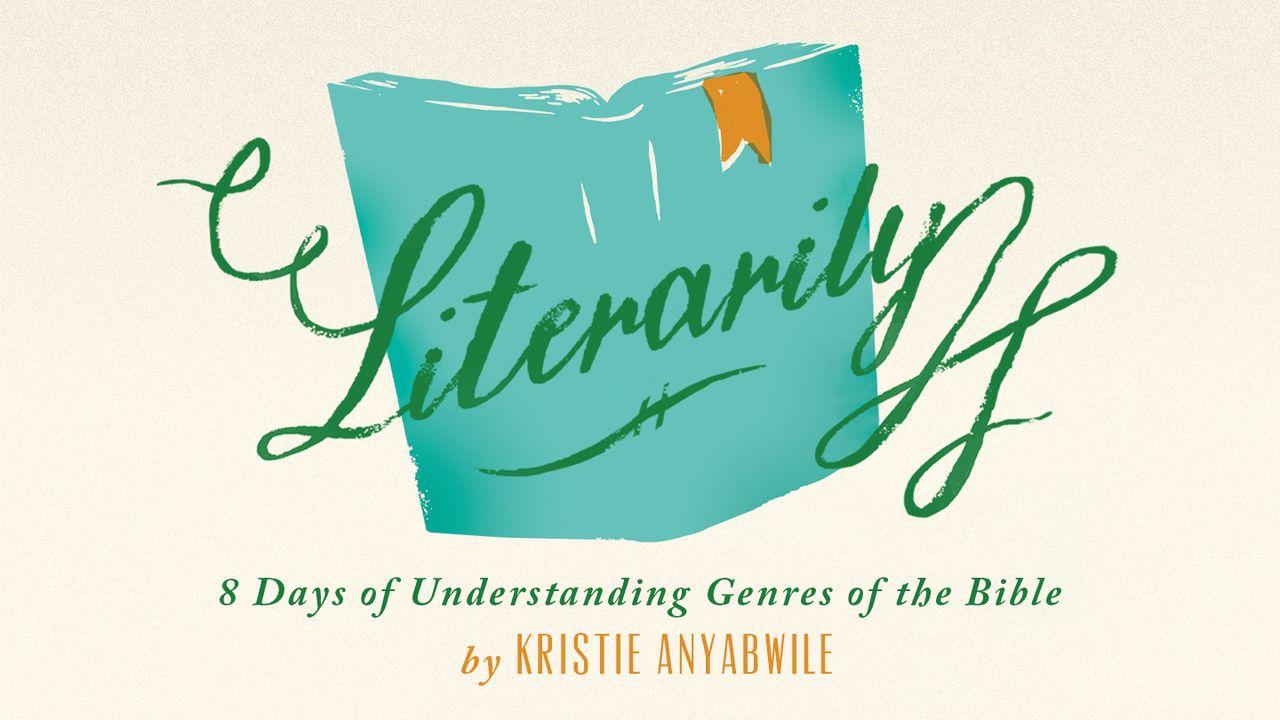Literarily: 8 Days of Understanding Genres of the Bible by Kristie Anyabwile预览

Old Testament Narrative
Scripture - Genesis 12:1-9; Judges 2; 1 Kings 11:9-39
Read today's passages of scripture before continuing to read this devotion.
How do these passages demonstrate how God’s people responded to His instructions in the law? What did God do in response? Find the plot arc of Genesis 12:1-9 by identifying the setting, inciting event, climax, and resolution. What do you learn of God and His ways in this passage? What attributes of God come to mind? How does this passage contribute to what God is doing to redeem a people for Himself?
Biblical history, also called Bible narratives, is history told in story form. These stories tell the history of God’s people from the beginning of the world, to when God’s people were held in captivity (exile) in Babylon, to the time after the exile (postexilic), to the time of Christ, to the rise of the church, to the consummation (the end of history and fulfillment of God’s promises to His people). Narrative history makes up almost half of the Bible and can be found throughout most Old Testament books, but the books of Genesis, Exodus, Joshua, Judges, Ruth, 1 and 2 Samuel, 1 and 2 Kings, 1 and 2 Chronicles, Ezra, Nehemiah, and Esther are Old Testament narratives that specifically chronicle the history of God’s people before Christ’s birth.
Narratives center around the plot. The plot is the whole of the story from beginning to end and generally follows an organized and unified path that gives shape to the story. This path is often referred to as a plot arc. The beginning of the plot consists of characters who are usually placed within a particular setting and an inciting incident or event that sets the main action of the story in motion, often creating tension or a problem that needs to be solved or a question that needs an answer. The middle of a plot is the nail-biting part of the story, called the climax, where the reader is on edge waiting to see how the problem will be solved. At the end of the plot is the resolution, where the tension or problem or question is resolved, where a new normal is established and the setting for a new plot begins.
The plot must hold together so that the sequence of events makes sense as a unit. The goal of using the literary technique of a plot arc in studying biblical narratives is so we might move beyond reading narratives as individual, self-contained stories with merely moral lessons on good versus evil and do’s and don’ts. Rather, we want to see how each individual story contributes to what God is doing throughout history to redeem a people for Himself, to view human experiences in ways that point us to our need for Christ, and to connect each narrative to the story of the Bible as a whole (the metanarrative).
读经计划介绍

In this eight-day study, you will learn about the major genres of Scripture - Law, Old Testament Narrative, Poetry, Wisdom, Prophecy, Gospels & Acts, Epistles, and Apocalyptic. We can deepen our understanding of God's Word by learning to study the Bible according to its literary genres. Whether you are new or seasoned in Bible study, this plan is intended to provide a framework for reading and understanding each genre.
More






